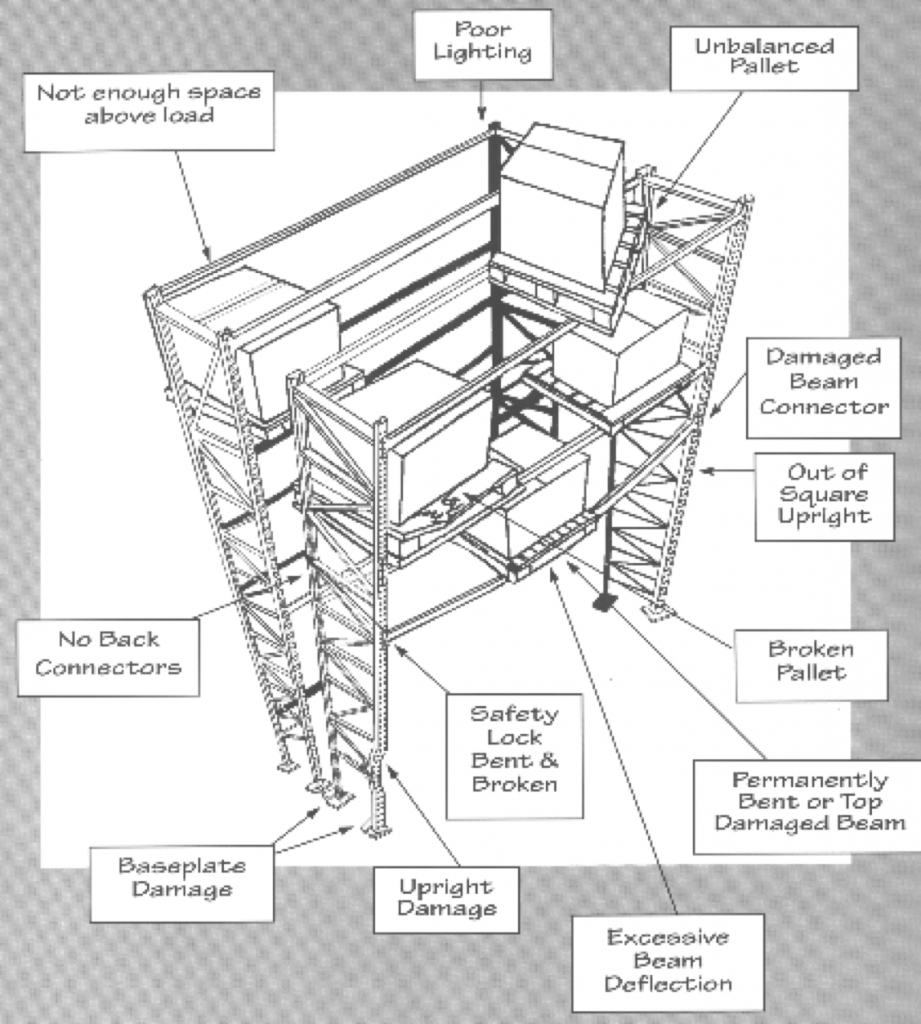Free Rack Safety Inspections
Rack collapses can injure or kill workers, and cost you thousands of dollars’ worth of inventory. And many are totally preventable. Making time to schedule regular rack inspections is crucial for the success of your business. While inspecting racks yourself is important, it’s even better to call in the experts. Our knowledgeable, experienced Rack Express technicians can identify and solve weaknesses in your storage system before a devastating collapse.
Get Your Free Rack Safety Inspection and Avoid These Rack Killers
 Here are some of the things we’ll be on the lookout for during a free inspection:
Here are some of the things we’ll be on the lookout for during a free inspection:
- Poor Lighting – A safe workplace requires adequate visibility. We’ll assess whether you need better lighting.
- Unbalanced Pallets – A sensible distribution of weight will keep your inventory, and your workers, much safer from collapse.
- Not Enough Space Above Load – Pallets piled too high are pallets that are overloaded. Older racks may not have the capacity stamped on them. Don’t assume you can fill all possible space between your pallets.
- No Back Connectors – Have your back connectors gone MIA? Since you’re usually looking at the front of your rack, you might not notice. That’s what an inspection is for.
- Damaged Beam Connector – Loaded beams must be able to withstand a half ton of uplift force. If your beam connectors are too loose, damaged, or have any visible deformation, it’s time to replace them.
- Broken Pallets – Have you cleared off the inventory lately to take a good look at your pallets? Cracked or broken pallets are about as obvious a safety hazard as you can get. But if your pallet is always loaded, you might not notice until it’s too late.
- Safety Lock Bent or Broken – Safety locks need periodic testing. If they’re bent or broken, they’re not doing their job.
- Base Plate Damage – Base plates are the foundation of your whole racking system. Are your base plates secured to your floor? Rated for the appropriate weight they’re bearing? An inspection makes sure your base plates are stable and free from twists or other damage. Your base plates should conform to manufacturer’s instructions about the distance between base plates and the level of the first beam.
- Upright Damage – Forklifts and uprights are natural enemies. And your forklift drivers might not report every minor incident. But over time, uprights are weakened. Inspections look for signs of damage, including telltale paint scrapes from forklift collisions, bends, twists, securely attached footplates and sound column protectors.
- Permanently Bent or Top Damaged Beam – Beams are meant to be straight. Bent and otherwise damaged beams need to be replaced sooner rather than later.
- Excessive Beam Deflection – Beams carry heavy loads, so some deflection is only natural. But this deflection should disappear once the beams are unloaded. Our inspection measures the amount of deflection in your beams, taking their size into consideration. For example, if a 96 inch beam deflects more than half an inch when not bearing a load, it needs to be replaced.
Many busy companies put off inspections because of the time or expense involved. But remember, few things are more expensive and heartbreaking than a serious rack collapse. Contact steven.higgins@rackexpress.com today to set up your free inspection.



